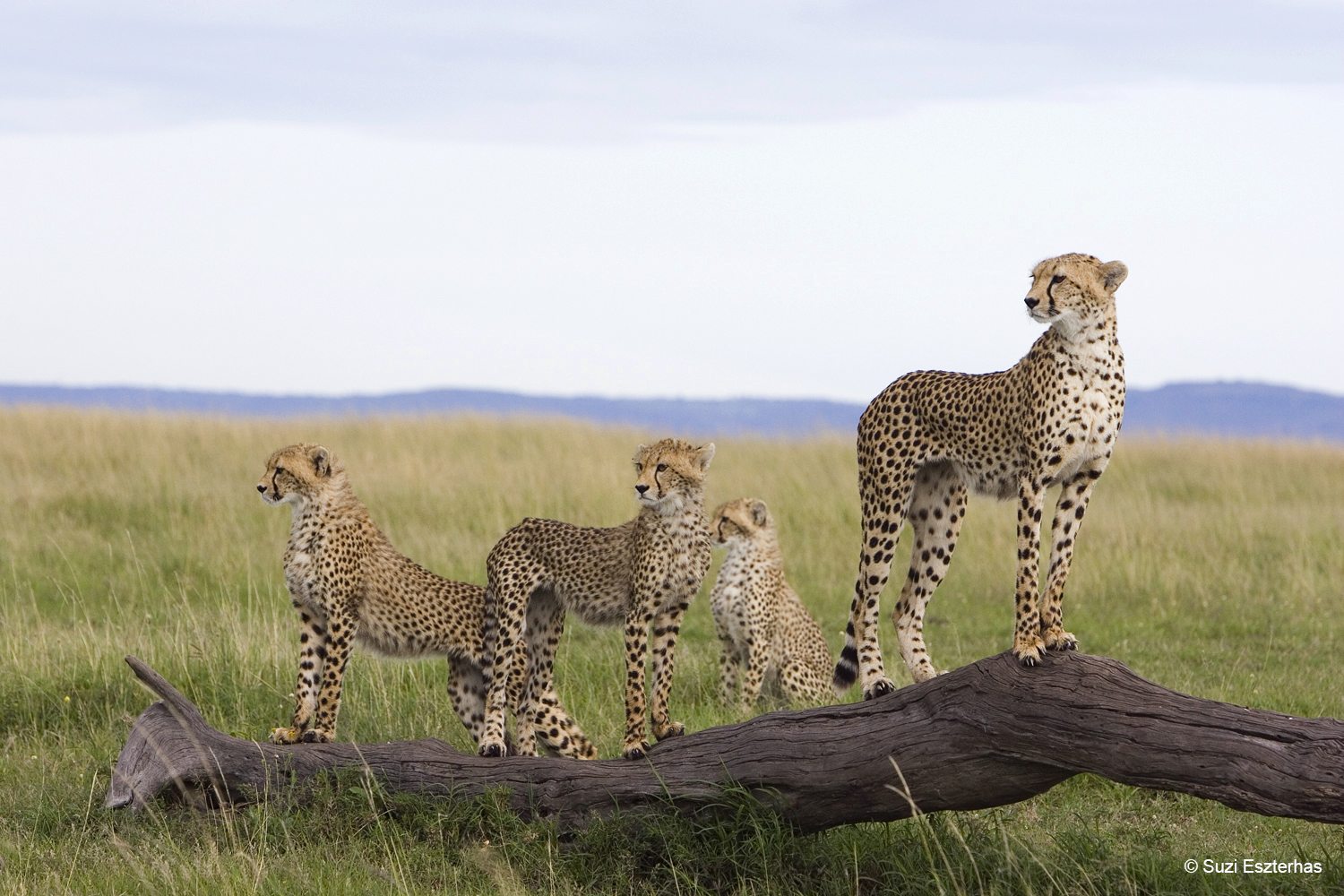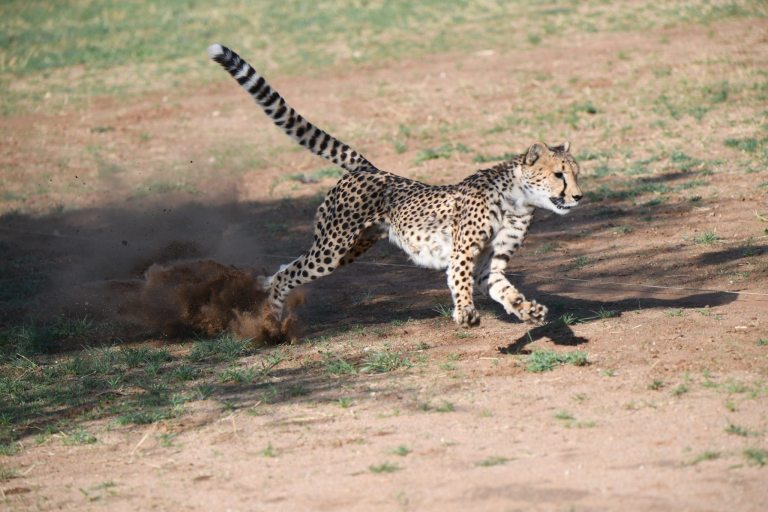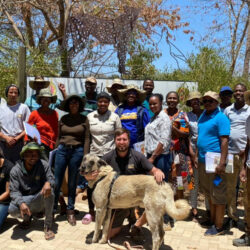Cheetah versus Impala: Each has a Competitive Edge
-

- by Meredith Hanel April 15, 2018

Somewhere in the African savanna, a cheetah is on the hunt.
She could easily catch a zebra, but it would be too large to take down: Antelope like the impala are more her size. You might think the cheetah, a predator that holds the title for fastest land animal, would catch her dinner with ease.
Despite her streamlined athletic body – long legs, extra large heart and lungs, feet that grip like running cleats – she fails to catch her prey 75% of the time according to research at The Royal Veterinary College, University of London, UK, and Botswana Predator Conservation Trust.
Paired predators and prey
Whether it be to catch dinner or to avoid being dinner, nature has molded predator and prey pairs, like cheetah with impala and lion with zebra, so that competition is fair. When all is in balance, predators get enough to eat without depleting their food source, and the ecosystem is in balance.
Cheetah and impala have been competing for perhaps hundreds of thousands of years. Evolution has tweaked genes to enhance running in both of these animals. We are learning which genes have evolved for speed in cheetah thanks in part to Cheetah Conservation Fund’s cheetah genetics research.

An impala’s body: a compromise in evolution to be good at both foraging and running fast.
The impala is not fast enough to win a race with a cheetah but it does have a trick that evens things out. Instead of running full speed ahead, the impala escapes the cheetah by slowing down and quickly changing direction. This insight, plus many more on the movement of cheetahs, impalas, lions and zebras in northern Botswana, was recently published in Nature. This research was lead by Professor Alan Wilson at The Royal Veterinary College, London, and included researchers at Botswana Predator Conservation Trust and Okavango Research Institute, University of Botswana.

Tracking the motion to understand the movements
Researchers placed remote tracking collars containing Global Positioning Systems and electronic motion sensors on the animals to collect data on athletic abilities like acceleration, deceleration, running speed, turning and stride. Before the team started using this technology, measurements of cheetah speed had mostly been made on captive animals running in a straight line chasing a lure.
Cheetahs can reach 59 mph (94 kph) even when running through vegetation, but they normally run at half this speed. This fits with computer modelling which predicts predators should run only slightly faster than their prey. Slowing down allows them to maneuver better.

Prey have the advantage of deciding which way to go and changing direction a split second before the predator can respond. Cheetahs and lions sometimes succeed at changing their direction quick enough to capture their prey because they are more athletic than their soon-to-be meal. This means cheetahs and lions are faster and better at accelerating and decelerating then their respective prey, the impala and zebra. By testing small muscle biopsies, researchers have also discovered that muscle fibres have more power.
More insights to come
Professor Wilson’s team is working on tracking more groups of predators and prey. The team will investigate how different habitat features and resources like water affect daily animal activities, hunting and evading capture. Knowing how different habitats affect cheetahs and other animals that keep their ecosystem in balance should guide cheetah conservation efforts everywhere.
More Reading & References:
Biewener, A. A. (2018, February 29). Evolutionary race as predators hunt prey. Nature.Retrieved April 08, 2018, from https://www.nature.com/articles/d41586-018-01278-w
Cheetah Facts for Kids. (n.d.). Retrieved April 08, 2018, from https://cheetah.org/about-the-cheetah/for-kids/
Dobrynin, P., S. Liu, G. Tamazian, Z. Xiong, A. A. Yurchenko, K. Krasheninnikova, S. Kliver, et al. 2015. Genomic legacy of the African cheetah, Acinonyx jubatus. Genome Biology16 (1): 277. doi:10.1186/s13059-015-0837-4. http://dx.doi.org/10.1186/s13059-015-0837-4.
Dynamics and Energetics of Hunting in the Cheetah. Royal Veterinary College, University of London. Retrieved April 08, 2018, from http://www.rvc.ac.uk/research/research-centres-and-facilities/structure-and-motion/projects/dynamics-and-energetics-of-hunting-in-the-cheetah
Genetics of the African Cheetah Continues to Surprise and Excite Researchers. Nova Southwestern University, USA. Retrieved April 11, 2018, from http://www.nova.edu/prmc/public-affairs/news/genetics-of-african-cheetah-continues-to-surprise-researchers.html
Hayward, M. W., Hofmeyr, M., Obrien, J., & Kerley, G. I. (2006). Prey preferences of the cheetah (Acinonyx jubatus) (Felidae: Carnivora): Morphological limitations or the need to capture rapidly consumable prey before kleptoparasites arrive? Journal of Zoology,270(4), 615-627. doi:10.1111/j.1469-7998.2006.00184.x.
Johnson, W. (2018, March 15). Cheetah. Encyclopedia Britannica. Retrieved April 07, 2018, from https://www.britannica.com/animal/cheetah-mammal
LOCATE: Locomotion, hunting and habitat utilisation among large African carnivores and their prey. Royal Veterinary College, University of London. Retrieved April 08, 2018, from https://www.rvc.ac.uk/research/research-centres-and-facilities/structure-and-motion/projects/locate-locomotion-hunting-and-habitat-utilisation-among-large-african-carnivores-and-their-prey
Pinkstone, J. (2018, January 25). How do you escape a cheetah? SLOW DOWN: Study reveals how prey have evolved to reduce their speed in an effort to outwit big cats during a chase. Retrieved April 08, 2018, from http://www.dailymail.co.uk/sciencetech/article-5310873/How-escape-cheetah-according-science.html
News and Events: Groundbreaking RVC research shows wild cheetah reaching speeds of up to 58mph during a hunt. Royal Veterinary College, University of London. Retrieved April 08, 2018, from http://www.rvc.ac.uk/News/PressReleases/pr1306-Cheetah-speed.cfm
Wilson, A. M., Hubel, T. Y., Wilshin, S. D., Lowe, J. C., Lorenc, M., Dewhirst, O. P., . . . West, T. G. (2018). Biomechanics of predator–prey arms race in lion, zebra, cheetah and impala. Nature,554(7691), 183-188. doi:10.1038/nature25479.https://www.nature.com/articles/nature25479
Yin, S. (2018, January 24). This Is How You Escape a Cheetah, if You’re an Impala. Retrieved April 08, 2018, from https://www.nytimes.com/2018/01/24/science/cheetahs-lions-zebras-impalas.html
Yong, E. (2013, June 13). Collars Reveal Just How Extreme Cheetahs Can Be. Retrieved April 08, 2018, from http://phenomena.nationalgeographic.com/2013/06/12/collars-reveal-why-just-how-extreme-cheetahs-can-be/
Related Reading
-
November 9, 2023
Giving Tuesday Canada 2023 – Supporting Namibian Youth



